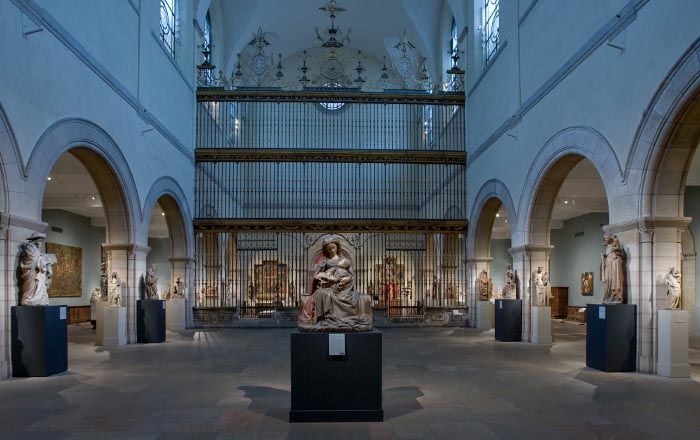Knave of Nooses, from The Cloisters Playing Cards
Not on view
The Cloisters Playing Cards
Largely on the basis of style, these cards have been attributed to the Burgundian Netherlands and dated to about 1475–80. Beyond style, however, the deck has a greater affinity to the German packs than to any cards in France. Like the German decks, the suit symbols pertain to the hunt: Collars (for dogs), Tethers (for hounds), Horns (for hunting), and Nooses (for suspending birds or small game from the belt). The figures were drawn in with pen and ink and then colored with typical medieval pigments.
Perhaps most striking in The Cloisters' face cards are the elaborate, sumptuous costumes of the kings and queens, displaying abundant amounts of ermine and bejeweled trim, gold embroidery, and substantial gold necklaces with gem-studded pendants. The knaves—jester, herald, foot soldier, and huntsman—are dressed appropriately for their occupations. The royal figures function as fashion plates representing the middle and later decades of the fifteenth century, rather than as a record of some specific time or event. A number of details seem odd or excessive even by the standards of Burgundian court fashion. These figures in their lavish dress displaying ordinary equipment of the hunt as if it were regal appurtenances might have been intended to parody the extravagances of the Burgundian court.
Unlikely a noble commission, The Cloisters Playing Cards may well have been made for a wealthy urban mercantile client who felt sufficiently secure in a newly established social order to hazard satirizing a declining one. If so, the cards were eerily prescient, for the death of Charles the Bold on the battlefields of Nancy in 1477 heralded the demise of the court of Burgundy as it had been known.
The Cloisters Playing Cards
South Netherlandish, Burgundian Territories, ca. 1475–80
Paper (four layers in pasteboard) with pen and ink, opaque paint, glazes, and applied silver and gold
Suits: Collars, Tethers, Horns, and Nooses
Thirteen cards in each suit: King, Queen, Knave, 10 through 1
Fifty-two cards, of which fifty-two survive
The Metropolitan Museum of Art, New York, The Cloisters Collection, 1983 (1983.515.1–.52)
This image cannot be enlarged, viewed at full screen, or downloaded.
This artwork is meant to be viewed from right to left. Scroll left to view more.







